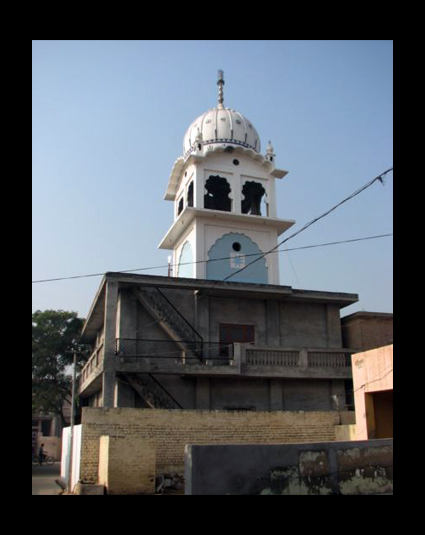Explore Mukarrampur's historical Sikh shrines, including Gurdwara Patshahi Chhevin, and experience profound spiritual heritage just 14 km from Sirhind.
Explore Langar Chhanni, sacred to Guru Tegh Bahadur. Discover its rich history and cultural significance in Ambala, Haryana.
Discover the spiritual heritage of Kot Dharmu, Punjab, at Gurdwara Sulisar Sahib, a site honoring Guru Tegh Bahadur with monthly gatherings and an annual fair.
Discover the sacred Gurdwara in Khiva Kalan, Punjab, where Guru Tegh Bahadur was honored. Experience rich history and serene beauty every Bikrami month.
Explore Khiala Kalan, a sacred village near Mansa in Punjab, known for its rich history with Guru Tegh Bahadur and its historic Gurudwaras.
KATTU, village 12 km southeast of Barnala (30°22`N, 75°32`E), in Sarigrur district of the Punjab, claims a historical shrine, Gurdwara Sahib Guru Sar Patshahi IX, commemorating the visit of Guru Tcgh Bahadur. The Gurdwara, marking the site of the Guru`s camp in what used to be a thicket by the side of a pool of water, is about 1 km northeast of the village. Hence the name Guru Sar, or the Guru`s Pool, although what is left of it now is but a slight depression in the adjoining fields. According to local tradition, Guru Tegh Bahadur came here in 1665. He held a discourse with a recluse, Dhian Das, who lived in a thatched hut near by. The villagers also assembled to listen to the Guru expound the teachings of Guru Nanak. Guru Tegh Bahadur summed up by saying what is vividly expressed in his hymns in measure Dhanasari: "Why dost thou run to the woods in search of Him; He, the allpervasive yet everdetached, abides within thee..." (GG,684). A Gurdwara was established here in course of time. The old building, constructed in the early years of the present century, comprises rows of rooms on three sides of a brickpaved courtyard. The foundation of a more spacious building was laid on 31 March 1977. This new complex has a divan hall with a sanctum lopped by a lotus dome. Tlie Gurdwara owns over 50 acres of land and is managed by a local committee under the auspices of the Shiromani Gurdwara Parbandhak Committee. An important annual event is the martyrdom anniversary of Guru Tegh Bahadur.
KARHA SAHIB, a village 11 km west of Pehova (29"59`N, 76°35`E) in Kurukshetra district of Haryana, was visited by four of the Sikh Gurus. Guru Nanak came here during his travels to the eastern parts. Chaudhari Kalu of this village became a follower and is said to have constructed a bdoK his honour. The second of the Sikh Gurus to visit this village was Guru Hargobind. The local tradition places Guru Tegh Bahadur`s visit during his last journey to Delhi, but it is more likely that he passed through this village in the course of one of his earlier travels across the area. Guru Gobind Singh was here in 1702 when he visited the shrines established here in memory of the earlier Gurus. Bhai Udai Singh, the ruler ofKaithal (d. 1843), got three gurudwaras constructed in the same compound and made land grants for their maintenance. These simple structures were replaced by more elegant buildings during the early 1970`s by Sant Jivan Singh of Pehova. The three shrines are sometimes jointly called Triveni Sahib. Two identical shrines in the northern and southern parts of the walled compound are dedicated to Guru Nanak and Guru Tegh Bahadur, respectively. Gurdwara Patshahi Chhevin is in the centre to the east, thus forming the apex of the triangle. The entire compound has a marble floor. The Gurdwaras are affiliated to the Shiromani Gurdwara Parbandhak Committee, but arc for the present managed by the successors of Sant Baba Jivan Singh Scvavalc.





